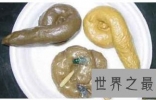天下”最老最大“生物”潘多“颤杨群接近灭亡(双语) ...
One of the largest organisms in the world, a Utah forest of genetically identical trees, is slowly being devoured by deer.
天下上最大的生物之一——犹他州的一片基因完全雷同的树林,正渐渐被鹿啃光。
The Pando quaking aspen colony, also known as the "Trembling Giant," has likely survived for thousands of years. But about 80 percent of it is in a perilous state, according to a new paper published today (Oct. 17) in the journal PLOS One.
这个“潘多”颤杨群(也被称为“发抖的伟人”)大概已生计了数千年。但17日揭橥在美国《科学公共藏书楼·综合》杂志上的一篇最新论文称,其约莫80%的树木处于伤害当中。
The trembling giant, weighing 13 million lbs. (5.9 million kilograms) and covering 106 acres ( square kilometers) of Utah’s Fishlake National Forest, consists of over 47,000 genetically identical stems that grow from a single underground parent clone.
这个“发抖的伟人”位于犹他州鱼湖国家丛林公园,重约1300万磅(约590万千克),占地约106英亩(0.42平方千米)。它由一个地下无性生殖根系上长出的4.7万株基因如出一辙的树干构成。
In this new study, a group of researchers measured the health of various parts of the forest, such as by counting the number of living versus dead trees, counting the number of new stems and tracking the feces of animals that dropped in for a bite. They found that the biggest obstacle to the strongest indicator of the forest’s health — whether new sprouts could survive — was mule deer.
在这项最新研讨中,几个研讨人员权衡了树林差别部位的安康情况,好比数一数活树与死树的数目和新长出树干的数目并追踪啃树植物的排泄物。他们发明,树林安康情况最有份量的目标就是新芽可否存活,而它的最大停滞是骡鹿。
It’s natural that the older stems are dying off, lead author Paul Rogers, the director of the Western Aspen Alliance and adjunct associate professor at Utah State University,told Live Science. What’s unnatural is that new stems aren’t growing, he said. For the past couple of decades, mule deer and cattle have been eating all the new stems that sprout from the underground mama aspen. In most areas, there’s no "young or middle-aged trees at all," he said. So the forest, to use human terms, is made up "entirely of very elderly senior citizens," Rogers said.
论文第一作者、美国西部颤杨同盟负责人、犹他州立大学兼任副教授保罗·罗杰斯在接管美国兴趣科学网页采访时称,老树枯槁死是自然而然的。他说,违背自然规律的是,新树干长不出来。在曩昔几十年里,骡鹿和牛不断在吃掉从地下颤杨母根上抽芽的全部新树苗。他说,大多数区域没有“中青年树”。罗杰斯示意,用拟人词语来讲,这片树林“完全由老年人”构成。
Rogers and his team also compared aerial photographs of the area that spanned 72 years and found that the aspen forest has been thinning. Back in 1939, the tree crowns all touched, but starting in the 1970s, "you see a lot of spaces between the trees," he said. This means that the old trees are dying and new ones aren’t coming in to fill in the gaps.
罗杰斯和他的团队还对照了该区域72年来的航拍照片,发明这片颤杨林日趋稠密。他说,在1939年时,树冠连成一片,但从上世纪70年月可以,“能够看到树与树之间有很大清闲”。这就是说,老树渐渐枯死,而新树没有长出来弥补空白。
Part of the problem is that game such as mule deer do not have natural predators in the area anymore. In the early 1900s, humans killed off most natural predators, such as wolves and grizzly bears, Rogers said. Now, most of the grounds in Pando are set aside for recreational uses like camping, where the browsers are protected from hunting. "The deer know that very early on, and they find it a safe harbor."
成绩的部份关键在于,该区域的骡鹿等植物不再有天敌。罗杰斯说,在20世纪初,人类杀死了它们的大多数天敌,好比狼和灰熊。如今,“潘多”的大部份空中被用于休闲流动,好比野营,啃食嫩枝的植物是遭到爱护不得猎杀的。罗杰斯说:“骡鹿很早就晓得这一点,它们发明那里很宁静。”
But really, "Pando is failing because of human decisions," Rogers said. "Humans control wild animals, particularly wild-game species like deer and elk."
不外,“潘多的失利,是因为人类的定夺,”罗杰斯说。“人类节制着野生植物,特别是像鹿和麋鹿如此的野生植物。”
There is one part of the trembling giant that is thriving. This area was fenced in around 2013 and within five years, thousands of stems — some 12 to 15 feet (3.6 to 4.5 m) tall — have been growing per acre, Rogers said. Here, the fence seems to be working. Half of the area that the aspen clone takes up is unfenced and easily accessible by the mule deer and cattle. Around 30 percent of the area is fenced in with an 8-foot-tall (2.4 meters) fence, Rogers said. But "the fence is not doing its job, so it’s also in a poor state," he said. "Somehow, the animals are still getting in — it’s a bit of a mystery to us," he said. He thinks the mule deer (not the cattle) are jumping it.
不外,“发抖的伟人”有一部份闹热畅旺。罗杰斯说,这块区域在2013年阁下被圈起来,五年内均匀每英亩长出了数千株树木,高约12到15英尺(3.6米到4.5米)。在那里,围栏好像施展着感化。这个颤杨根系所及的区域有一半没有围栏爱护,很轻易有骡鹿和牛进入。罗杰斯说,约莫有30%的区域用8英尺高(2.4米)的围栏围着,但他示意:“围栏没有施展感化,于是仍旧很蹩脚。”不知怎样的,植物们照样能够进来——这对我们来讲大概有点神奇。”他认为骡鹿(不是牛)跳过了围栏。
"We need to help control the animals — both deer and cattle — and give Pando a break so that it can recover," Rogers said. This can be done by culling their numbers, restricting them with properly working fences or keeping them moving out of the area, as predators traditionally did, he said.
罗杰斯说:“我们需求辅助节制这些植物——不管是鹿照样牛——让‘潘多’有机遇喘口吻以便复兴。” 他说,这能够通过削减它们的数目,用符合的围栏限定它们的流动,大概像古老的捕食者那样,让它们阔别这个区域来实现。
"We’re not talking about just the tree, but we’re talking about all the plants and animals dependent on it," Rogers said. "We can’t manage wildlife and forest independently, we have to manage them in concert and in coordination with each other."
罗杰斯示意,“我们所评论的不只是树,而是全部依靠于树生计的动植物。”“我们没法自力经管野生植物和丛林,我们必需和谐分歧。”
And the approaches that work to protect Pando could be extended to aspens around the world, he said.
而且他说,爱护潘多的这片树林的方式能够在全天下发扬。
上一篇:英媒评出天下最具影响力的10本书
下一篇:读松本清张《D之复合》读后感分享
大家都在看
-
超15项世界纪录!这届残特奥会太顶了 12月15日,中国残联和残特奥会广东、香港、澳门赛区举行残特奥会总体运行情况新闻发布会,介绍全国第十二届残运会暨第九届特奥会赛事组织成果。本场发布会由残特奥会组委会副秘书长、中国残联宣文部主任王宏伟主持。 ... 世界记录12-16
-
创五项吉尼斯纪录 从单车智能到公域安全,汽车行业安全新标准或将由此诞生 根据中汽协与乘联分会的最新数据,中国新能源汽车的单月渗透率已稳固在50%以上,部分月份甚至逼近60%。这标志着新能源汽车已经成为中国车市的主流。公众关于新能源汽车的焦虑也逐渐从续航里程和充电桩数量转向了安全 ... 世界记录12-16
-
3分钟537次!河南10少年刷新“同心绳”吉尼斯世界纪录 近日,河南省洛阳市涧西区一支由10名少年组成的跳绳团队刚收到一份证书——他们以537次的成绩创造“3分钟内8人一组跳同一根绳次数最多”吉尼斯世界纪录。这支年轻的队伍由8名跳绳队员和两名摇绳队员组成,成员年龄在 ... 世界记录12-14
-
创五项吉尼斯纪录, 吉利全球全域安全中心发布 车辆正在吉利全球全域安全中心进行极寒测试。吉利汽车供图中国青年报客户端讯(中青报·中青网记者 张真齐)12月12日,吉利汽车在浙江省宁波市发布全球全域安全中心。该中心总面积超过8万平方米,具备27大类安全测试 ... 世界记录12-14
-
中国氢动力多旋翼无人机创飞行最长吉尼斯纪录 中新社杭州12月11日电 (鲍梦妮 吴启帆)第七届浙江国际智慧交通产业博览会11日在杭州开幕。现场,吉尼斯世界纪录官方认证官宣布,“天目山一号”氢动力多旋翼无人机创造了“氢燃料电池驱动的多旋翼无人机飞行的最长距 ... 世界记录12-12
-
香港3人乘定期航班44小时环游世界,创吉尼斯世界纪录,其中一残障人士靠轮椅出行:两天跨越多个大洲与时区,行程设计精确到分钟 两天的旅程跨越多个大洲和时区,行程设计几乎精确到分钟,每次转机间隔压缩到最短……12月8日,红星新闻记者从吉尼斯世界纪录获悉,三名来自中国香港的挑战者——叶湛溪、李瑞麒(Ricky)与温瀚翔(Hanson)——以44 ... 世界记录12-09
-
乘定期航班44小时环游世界!香港三人组创吉尼斯世界纪录,一成员系靠轮椅出行残障人士 三人在飞行旅途中两天的旅程跨越多个大洲和时区,行程设计几乎精确到分钟,每次转机间隔压缩到最短……12月8日,红星新闻记者从吉尼斯世界纪录获悉,三名来自中国香港的挑战者——叶湛溪、李瑞麒(Ricky)与温瀚翔( ... 世界记录12-09
-
全球精彩挑战庆祝2025年度吉尼斯世界纪录日 • 中国: 最高的小轮车后空翻• 英国: 最快时间登顶并下攀O2体育馆• 美国: 最大的爆炸头• 阿联酋: 30秒内在行驶的四轮摩托上用脚底颠足球次数最多• 日本: 身体吸住最多的易拉罐吉尼斯世界纪录在今天迎来第 21 届 ... 世界记录11-26
-
50部剧目荣登金榜!大世界基尼斯中国魅力榜发布 11月20日,“2025大世界基尼斯中国魅力榜·年度戏剧榜发布盛典”在国家会展中心(上海)举行。当天共发布“年度戏剧榜·音乐会榜”“年度戏剧榜·儿童剧榜”“年度戏剧榜·话剧榜”“年度戏剧榜·舞剧榜”“年度戏剧 ... 世界记录11-25
-
大世界基尼斯中国魅力榜携手长三角文博会,发布年度戏剧榜单 今年的长三角文博会上,“大世界基尼斯中国魅力榜”专题展区首次亮相。11月20日文博会开幕当天,“2025大世界基尼斯中国魅力榜·年度戏剧榜发布盛典”也在国家会展中心举行。当天共发布“音乐会榜”“儿童剧榜”“话 ... 世界记录11-24
相关文章
- 大世界基尼斯中国魅力榜携手长三角文博会,发布年度戏剧榜单
- 8项世界纪录! 一组数据带你看全运
- 8项世界纪录!一组数据带你看全运
- 吉尼斯世界纪录!上海机器人从苏州一路走到外滩,跨省行走超百公里
- 人形机器人从苏州走到上海,超106公里创吉尼斯世界纪录
- 人形机器人跨省行走 创吉尼斯世界纪录
- 这个已保持二十多年的世界纪录,会一直保持到2050年。你信吗?
- 你可能有一项世界纪录,忘了申请
- 十五运会│举重:刘焕华超世界纪录夺冠
- 吉尼斯纪录日全球炫技:中国少年骑小轮车“飞天”2.9米,纽约女子刷新“最大爆炸头”纪录
- 全球首次人形机器人跨省行走,智元远征A2挑战吉尼斯世界纪录
- 李小龙创造的七个世界纪录,致敬英雄🦸🏻♂️
- 廖桂芳超挺举世界纪录夺冠
- 世界纪录还在延续!西班牙2005年至今连续48场世预赛破门
- 中国这一数据传输速率,创世界纪录!
- 射击世锦赛:“四金”姚千寻再夺两银 中国队创一项世界纪录
- 挑战吉尼斯世界纪录,奥克斯空调的科技向善与智能有爱
- “四金”姚千寻再夺两银 中国队创一项世界纪录
- 美国男子1小时内投中1516个三分球,或将夺得吉尼斯世界纪录
- 刷新世界纪录!我国团队成功构建
热门阅读
-
世界上最大的男性生殖器,奇人的丁丁长度达34厘米 07-10
-
十种最舒服的安乐死,千万不要尝试哦! 07-11
-
陈冠希张柏芝艳照门图片曝光,堪比激情大片(高清) 04-26
-
巩新亮整容前后差异大 网友直呼惨不忍睹 05-05
-
张柏芝私人相册照片流出,尺度大的惊人(艳照门图) 05-06
-
美国史上最惨不忍睹的分尸案,黑色大丽花惨案 04-25


















